Abstract
Net photosynthesis, dark respiration, and growth of Rumex patientia L. exposed to a ultraviolet irradiance (288-315 nanometers) simulating a 0.18 atm·cm stratospheric ozone column were determined. The ultraviolet irradiance corresponding to this 38% ozone decrease from normal was shown to be an effective inhibitor of photosynthesis and leaf growth. The repressive action on photosynthesis accumulated through time whereas leaf growth was retarded only during the initial few days of exposure. Small increases in dark respiration rates occurred but did not continue to increase with longer exposure periods. A reduction in total plant dry weight and leaf area of approximately 50% occurred after 22 days of treatment, whereas chlorophyll concentrations remained unaltered.
Full text
PDF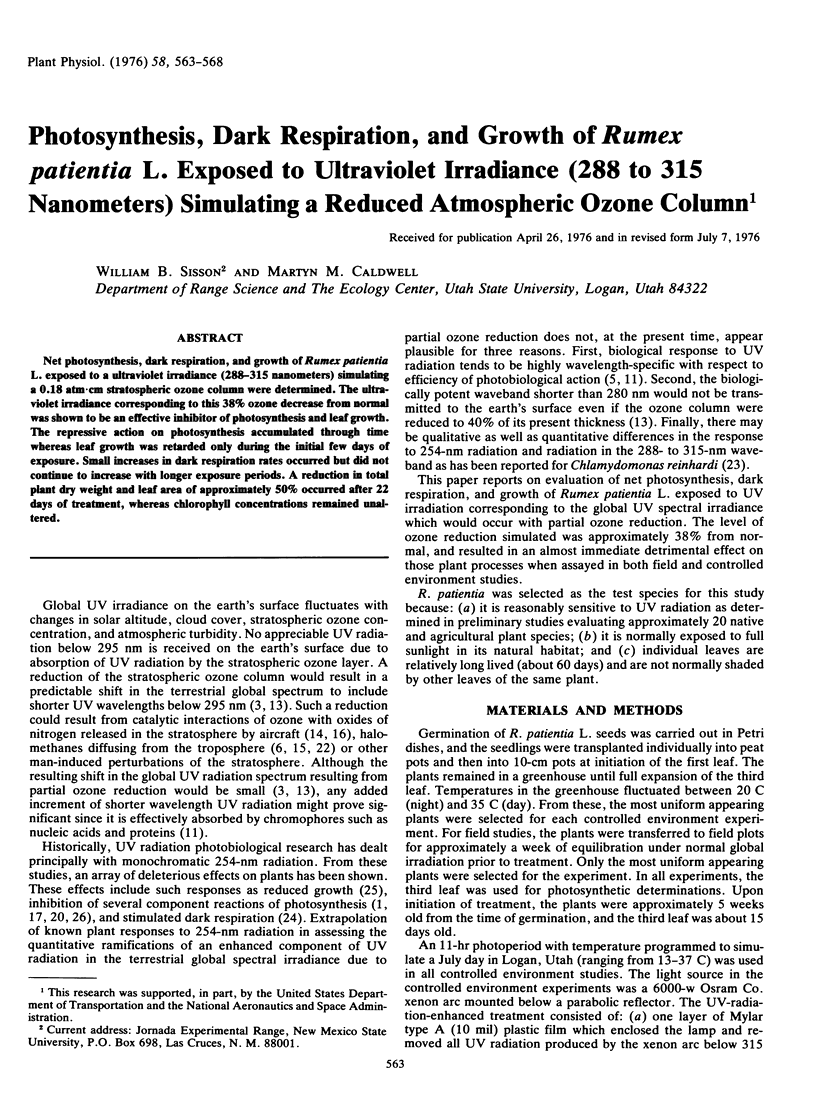
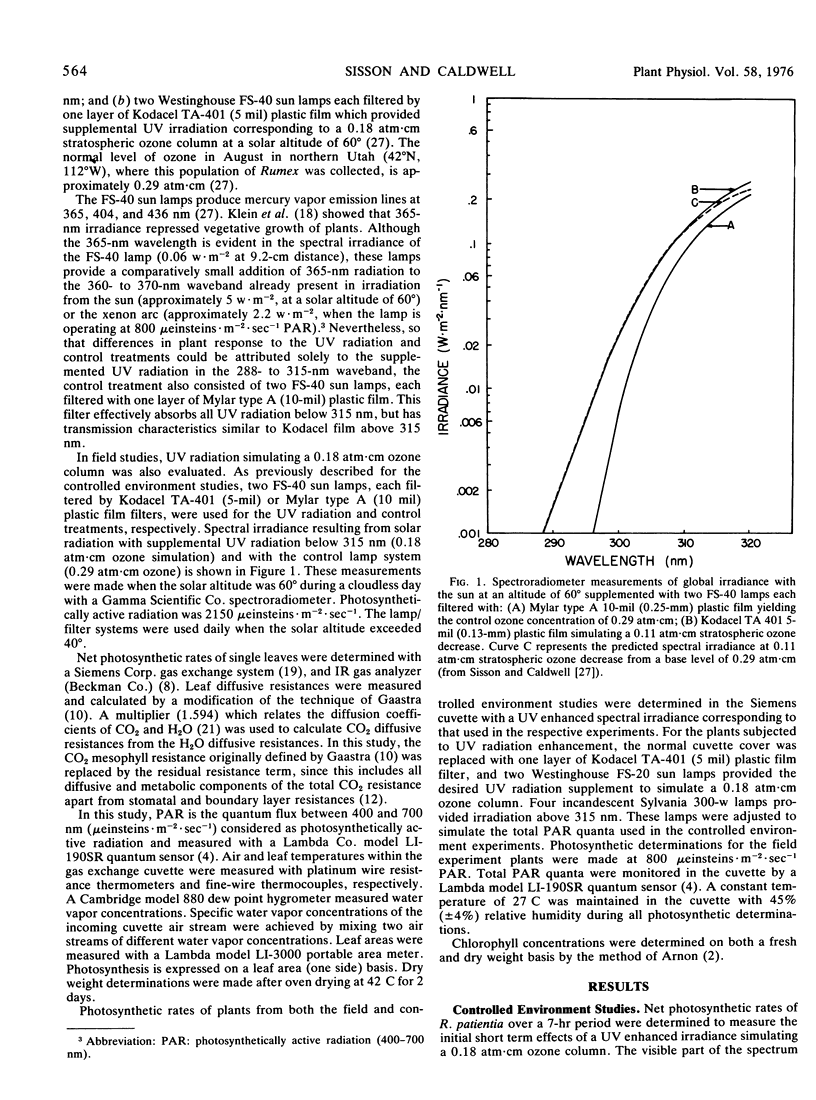

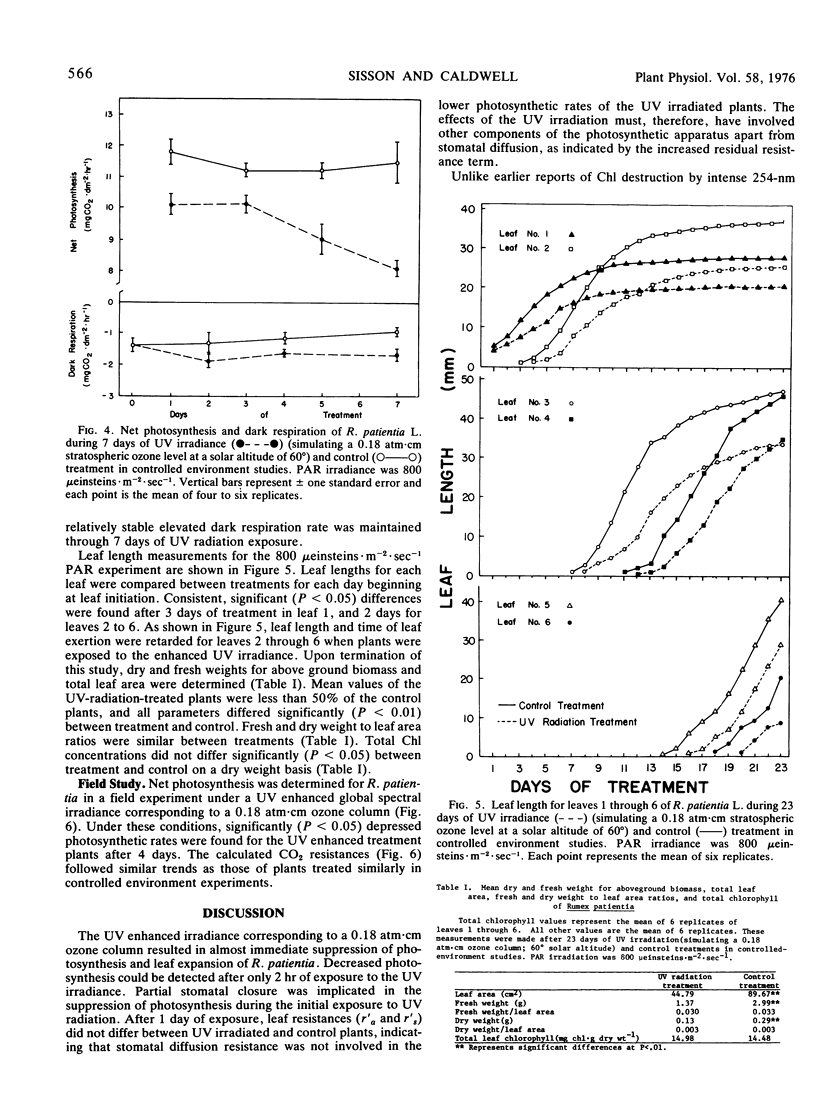
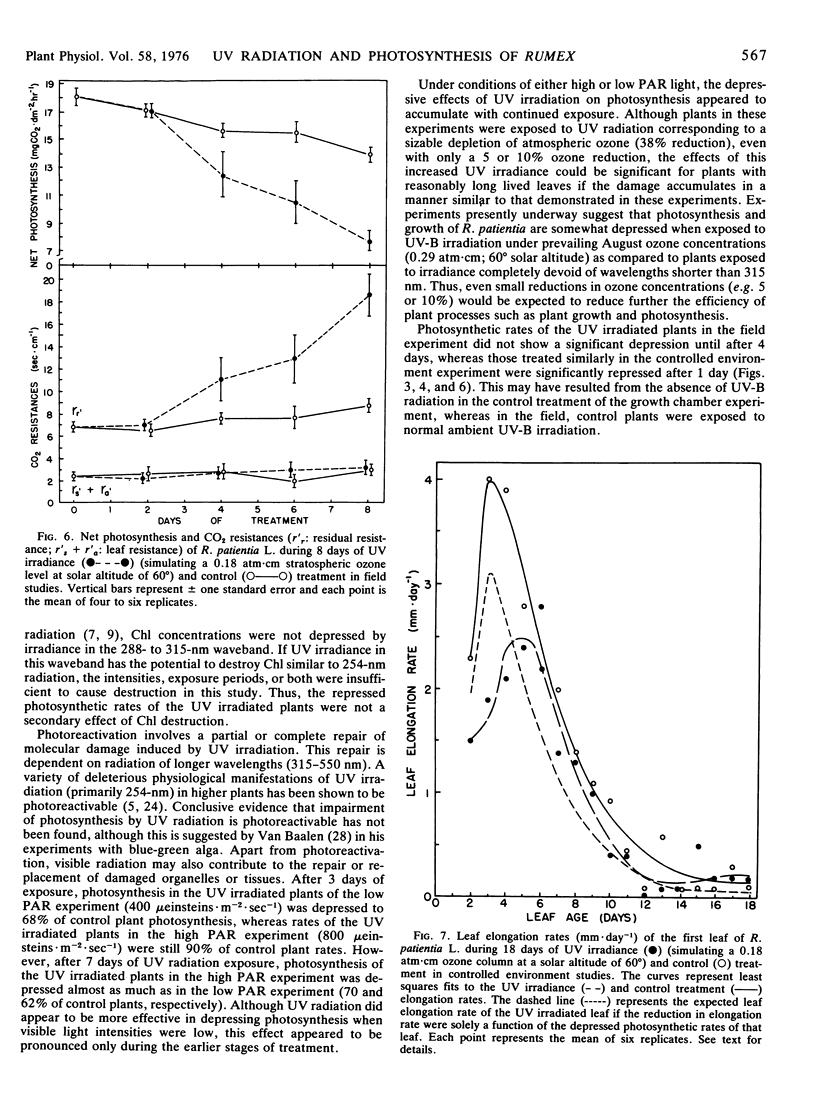
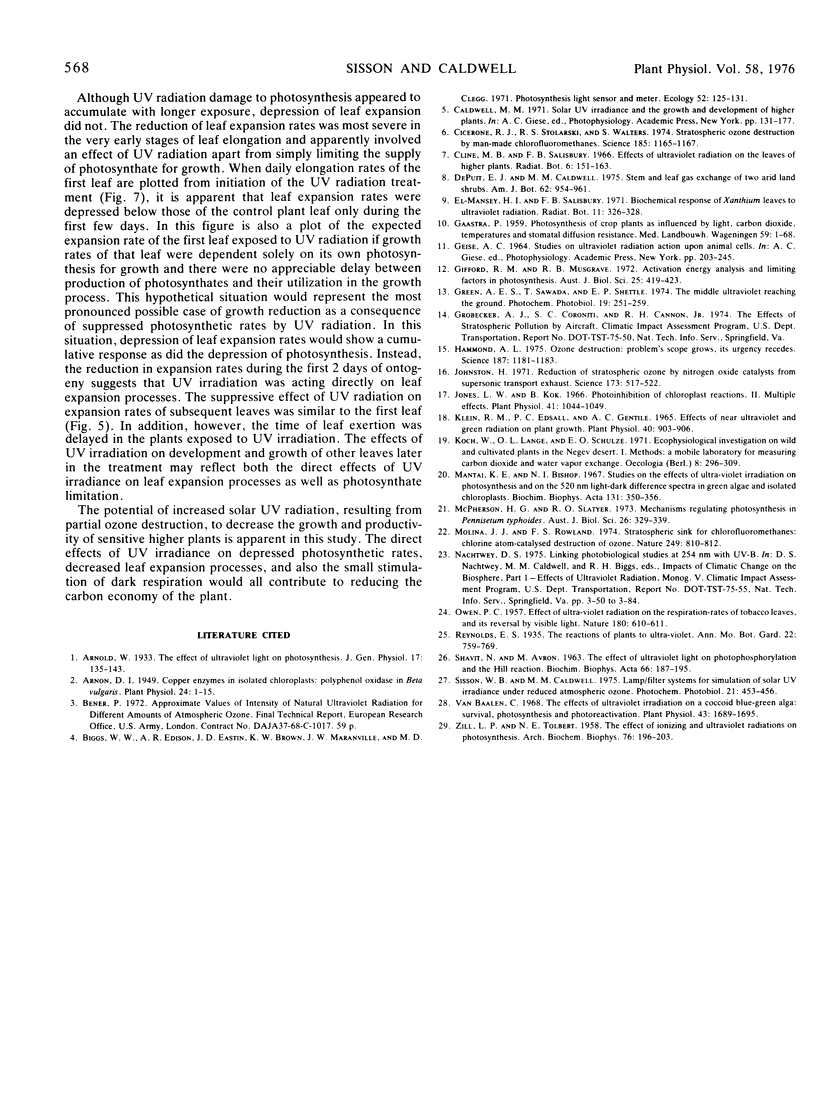
Selected References
These references are in PubMed. This may not be the complete list of references from this article.
- Arnon D. I. COPPER ENZYMES IN ISOLATED CHLOROPLASTS. POLYPHENOLOXIDASE IN BETA VULGARIS. Plant Physiol. 1949 Jan;24(1):1–15. doi: 10.1104/pp.24.1.1. [DOI] [PMC free article] [PubMed] [Google Scholar]
- Cicerone R. J., Stolarski R. S., Walters S. Stratospheric ozone destruction by man-made chlorofluoromethanes. Science. 1974 Sep 27;185(4157):1165–1167. doi: 10.1126/science.185.4157.1165. [DOI] [PubMed] [Google Scholar]
- Hammond A. L. Ozone Destruction: Problem's Scope Grows, Its Urgency Recedes. Science. 1975 Mar 28;187(4182):1181–1183. doi: 10.1126/science.187.4182.1181. [DOI] [PubMed] [Google Scholar]
- Johnston H. Reduction of stratospheric ozone by nitrogen oxide catalysts from supersonic transport exhaust. Science. 1971 Aug 6;173(3996):517–522. doi: 10.1126/science.173.3996.517. [DOI] [PubMed] [Google Scholar]
- Jones L. W., Kok B. Photoinhibition of Chloroplast Reactions. II. Multiple Effects. Plant Physiol. 1966 Jun;41(6):1044–1049. doi: 10.1104/pp.41.6.1044. [DOI] [PMC free article] [PubMed] [Google Scholar]
- Klein R. M., Edsall P. C., Gentile A. C. Effects of Near Ultraviolet and Green Radiations on Plant Growth. Plant Physiol. 1965 Sep;40(5):903–906. doi: 10.1104/pp.40.5.903. [DOI] [PMC free article] [PubMed] [Google Scholar]
- Mantai K. E., Bishop N. I. Studies on the effects of ultraviolet irradiation on photosynthesis and on the 520 nm light-dark difference spectra in green algae and isolated chloroplasts. Biochim Biophys Acta. 1967 Mar 8;131(2):350–356. doi: 10.1016/0005-2728(67)90148-x. [DOI] [PubMed] [Google Scholar]
- SHAVIT N., AVRON M. The effect of ultraviolet light on photophosphorylation and the Hill reaction. Biochim Biophys Acta. 1963 Mar 19;66:187–195. doi: 10.1016/0006-3002(63)91185-5. [DOI] [PubMed] [Google Scholar]
- Van Baalen C. The effects of ultraviolet irradiation on a coccoid blue-green alga: survival, photosynthesis, and photoreactivation. Plant Physiol. 1968 Oct;43(10):1689–1695. doi: 10.1104/pp.43.10.1689. [DOI] [PMC free article] [PubMed] [Google Scholar]
- ZILL L. P., TOLBERT N. E. The effect of ionizing and ultraviolet radiations on photosynthesis. Arch Biochem Biophys. 1958 Jul;76(1):196–203. doi: 10.1016/0003-9861(58)90134-6. [DOI] [PubMed] [Google Scholar]


